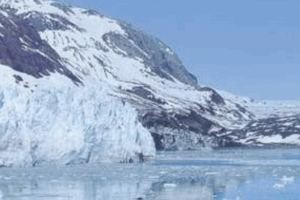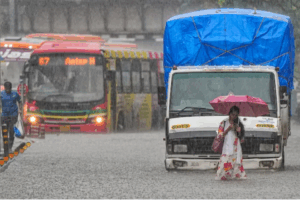By K Sahadevan. Dated: 7/5/2020 11:50:27 PM
“The conflict between India and China is evolving from a traditional border dispute between two countries into a complex and unsolvable environmental crisis. This becomes clear if one considers the many constructions that both countries are undertaking in the region and the implications they have on the Himalayan ecosystem.”
We understand war through the sound of bullets and the sight of dead bodies of soldiers. If someone asks the people of the border areas, many facets of the war will be revealed, beyond media coverage, official reports, and hyped-up patriotism. War can sometimes take the form of a flash flood or that of a drought. These are not wars waged by nature against man, but are in fact environmental attacks by the governments.
On February 12, 2012, residents of Pasighat Town in East Siang District of Arunachal Pradesh woke up to a shocking sight. The Siang (Brahmaputra) river originating from Tibet was suddenly found to have almost dried up. Investigations carried out by the district authorities found that the Siang River was dry because the Chinese authorities had blockaded the Yarlang Sangpo (Brahmaputra’s Chinese name) river overnight.
Another incident in 2000 was not easily forgotten by the people living on the banks of the Brahmaputra. On June 9, the water level of Siang rose suddenly by 30 meters and inundated almost the entire township causing widespread destruction to property besides claiming seven lives following the collapse of a hydropower dam in Tibet. There were allegations that Chinese authorities were behind this, but it was later discovered from satellite images that this was just a natural dam burst.
In both cases, we can see among the people and the local authorities the distrust, apprehension, and the fear of turning water into a weapon of war. The people of the Hindukush-Himalayan region have been living in this kind of distrust and anxiety for the past two decades. In fact, international and national attention is drawn only when the water conflicts between the two countries transform into border disputes.
The conflict between India and China is evolving from a traditional border dispute between two countries into a complex and unsolvable environmental crisis. This becomes clear if one considers the many constructions that both countries are undertaking in the region and the implications they have on the Himalayan ecosystem. What is attempted here is an analysis of the emerging environmental causes behind the Indo-China border dispute.
Water: The party is over
It has been predicted in many ways that water will be the cause of most of the conflicts in the new millennium. The diminishing availability of fresh water on Earth proves that the term ‘blue planet’ will not last long. Warnings about impending water conflicts have a history of at least six decades. International bodies, such as the United Nations, have long warned member states of future water shortages. But political leaders who saw in the immediate vicinity the abundance of water, ignored all warnings. Until recently, in geopolitical discussions the debate over water was alien. Water conservation is of little importance in their developmental and political agendas.
If water, which has been the basic resource for existence, from the life of the species to the economic activities of man, has been transformed into a root cause for constant conflict, it is only because of the lack of foresight of our political leadership. Global water shortages have become an issue that affects two thirds of the global population today. By the time we realize with regard to water abundance that the party is over, it has become an issue of constant tension between peoples and nations.
Asia, which now comprises more than half of the global population, is emerging as a new conflict zone for geopolitical reasons. An important one of the many factors that leads to such a situation is the fact that the scarcity of water in the region cannot be covered up any more. Let us try to understand more deeply the water conflicts behind the tense India-China relationship.
The tensions between China, which has become the world’s number one economic power, and India, ‘number one among the emerging economies’, are deepening. This is particularly so because the three nations that have nuclear weapons and political leadership that is totalitarian are part of the crisis.
China: Growing Economy and Drying Water Resources
With a population of 1.39 billion and a $14 trillion economy, China is the world’s number one economy by 2020, based on the power purchasing parity. Chinese products, based on low production costs, have dominated the world market, including the US. The growing population and size of the economy have forced China to increase its resource utilization. China’s planned ‘Belt and Road Initiative’ (BRI), connecting more than 70 countries and spending $ 1 trillion, will further strengthen Chinese trade links through land and sea. Many of China’s large-scale projects, including the China-Pakistan Economic Corridor (CPEC), require large-scale resource utilization. One of the most important and most scarce of these resources is water.
With 20% of the world’s population, China has just 7% of the global water resources (FAO, Aquastat, Online Data, 2011). This illustrates the depth of water shortage the country is experiencing. The Aquaduct Water Risk Atlas, prepared by the World Resources Institute, reveals that 30% of China’s land surface is under severe water stress. This means that about 678 million of the Chinese population are victims of the water crisis. This is more than 48% of the population. (This is based on data available from 2001 to 2010.) According to a study by water resource expert Jiao Wang, the extent of drought-stricken Chinese territory has increased by 57% over the past decade (Drop by Drop, Better Management Makes Dents in China’s Water Stress, Jiao Wang, April, 2018, WRI).
Through a nationwide census, the country was first exposed to a phenomenon that could be attributed to China’s water shortage. The census reveals that 28,000 of the 50,000 rivers that had been flowing in the country 20 years ago have disappeared. Chinese officials have interpreted the disappearance of rivers in the census report as a ‘statistical error’. However, a large group of meteorologists and ecologists point out that this is a real crisis for China in dealing with climate change.
High economic growth and the export-oriented manufacturing sector are contributing to the massive water shortage. The change in groundwater resources over the last two decades must be understood in relation to China’s economic growth. One of the mainstays of Chinese strategies to reduce production costs is the unscrupulous resource exploitation, which makes underground water resources vulnerable. Increased population and higher living standards have caused dramatic changes in household water use in China over the past few decades. These, it has been often pointed out, are the causes of excessive exploitation of groundwater sources.
By 2030, China’s water demand is estimated to be 818 billion cubic meter and the current water supply is 618 billion cubic meters. The reality is that China can only drive the economic growth it has envisaged if it can bridge the gap of up to 24% between supply and demand. These ‘externalities’ never appear in growth debates and are also the undercurrent of many an international conflict.
China has earned the status of the world’s largest dam builder. China’s ‘Three Gorges Dam’ leaves all other dams in the world behind in terms of capacity. Various reports suggest that China is planning massive water projects to overcome the impending water crisis. A 35-member State Council had been commissioned in 2006 to prepare the details of the ‘Great Bend’ project, which will double the size of the Three Gorges in the Yarlang Sangpo (Brahmaputra) basin (Brahma Chellaney, “China’s New War Front,” Times of India, April 23, 2013).
‘India-China Bhai Bhai’: Twins on the Drought Map
India is home to 17% of the global population. At the same time, India accounts for only 4% of global water resources (FAO, Aquastat, Online Data, 2011). The scarcity of water resources is a major concern for India’s developmental future. The water conflicts between subnationalities have become a daily affair for India. Disputes relating to water sharing in all major and minor rivers of India, including Kaveri, Krishna, Mahanadi, Damodar and Yamuna are leading to major conflicts and bloodshed. There is even a situation in India where water can be used as a weapon.
In June 2016, the Jat community in Haryana, during its agitation seeking financial reservation, called for a strike to freeze water supplies to Delhi. When protesters closed the Munak canal, supply of drinking water to over 1 crore people in Delhi was blocked. The army took control of the canal and in the conflict that ensued 18 people were killed. This event reveals how local communities have recognized the potential of using water as a weapon. It also indicates that the escalating interstate water disputes will only weaken the integrity of India’s nationhood.
Our developmental history shows that India has become a water-scarce country, driven by economists who have no preliminary understanding that economic growth must begin with the protection of natural resources. The Composite Water Management Index (CWMI) 2019, compiled by Niti Aayog, indicates that by 2030 the gap between the country’s per capita water supply (765km3) and demand (1498km3) will almost double. In her 2020 budget presentation, Finance Minister Nirmala Sitharaman said that 100 out of the 739 districts in India (13.5%) are suffering from severe water shortages. The reality is that over 66 crore people in India have no access to safe drinking water. It is worrying that the country’s ground water depletion rate has increased by 23% between 2000 and 2010, and this trend is on the rise. One of the key factors that will hamper Prime Minister Narendra Modi’s dream that India will grow to 5 trillion economy by 2025 will be the aforementioned water shortage. Economists have warned that shortages of water could lead to problems in agricultural and industrial sectors causing a 6% decline in India’s GDP. While water shortages pose problems for the nation’s economic growth, the water disputes between subnationalities are escalating into more serious internal conflicts. It is undeniable that the root cause behind the partition of Andhra Pradesh into two states is the water sharing of the Krishna River. The dispute between Karnataka and Tamil Nadu over the Cauvery River has led to riots on several occasions. Disputes still persist with Odisha and Chhattisgarh over the use of water in the Mahanadi River. Odisha responded by holding a state-wide hartal to protest the Chhattisgarh government’s move to build 13 barges on the Mahanadi River. Disputes between the states of Punjab, Haryana and Rajasthan on the sharing of water in the Ravi and Beas rivers, and between the states of Gujarat, Maharashtra and Rajasthan on the use of Narmada river water are currently active. Water disputes over Mullaperiyar, Parambikulam and Aliyar dams are also intensifying in Kerala. Various tribunals have been working to resolve the above water disputes for years but have failed to find solutions.
Hidden water conflicts in border disputes
Disputes over the Indo-China border began long before the birth of independent India. There have been numerous military confrontations, diplomatic talks and a war over the two sides; however, they have not evolved from what would normally be a border dispute. However, with the dawn of the new millennium, as the Chinese government moves ahead with the construction of dams in the Himalayan waters and mining operations, and with the Indian government building a dam network in Arunachal Pradesh, the Indo-China border disputes are becoming indicators of future water wars.
Yarlung-Brahmaputra-Jamuna
China shares four major rivers with India and other neighboring countries. The most important river is the Yarlang Sangpo, which is called the Brahmaputra in India and the Jamuna in Bangladesh (not the Yamuna River). The Brahmaputra River is one of the widest rivers in the world—50% (2,70,900 sq km) of the Brahmaputra River Basin is shared by China, 36% (1,95,000 sq km) by India and the rest by Myanmar and Bangladesh. The Brahmaputra basin has a population of about 63 million in the four countries mentioned above.
It can be seen that water is a key component of China’s planned industrial growth. The Chinese industrial sector consumes 120 billion cubic meters of water annually. The country’s coal mining sector is also demanding similar water use. Aimed at the country’s growing water and industrial growth, the Chinese government’s planned “Western China Development Strategy” aims at the massive exploitation of Tibetan natural resources—mainly minerals and water. Chinese experts estimate that the generation of electricity from the Yarlang Sangpo River is 114 gigawatts (Managing the Rise of a Hydro-Hegemon: China’s Strategic Interests in the Yarlung-Tsngpo river, Jesper Svensson, IDSA Occassional Paper, No-23). Work on the 550 MW Sangmu project has already begun. In addition to this, China has also planned to add another 20 hydropower projects in the Yarlong basin.
Jasper Svensen reports on March 28, 2011, that the Chinese official newspaper People’s Daily reported that these are projects that could provide 700 million cubic meters of water for the development of the Tibetan Autonomous Region.
During various diplomatic negotiations, the Chinese government has repeatedly assured Indian authorities that they are “convinced of their responsibilities as an Upper Riparian State”. Chinese experts explain that their projects on the Sangpo River are ‘run of the river’ (the run-of-the-river project, which is characterized by the use of turbines to generate electricity without interrupting the flow of rivers). However, Delhi-based Center for Policy Research (CPR) professor and water security expert Brahma Chellani rejects China’s claims by evaluating China’s water use and dam construction practices. “From the Yangtze to the Mekong, and now in Brahmaputra, China’s dam-building pattern is quite accurate. China plans to build 12 dams on the surface of the Brahmaputra. Work on the mid-range one has already begun. These dams not only affect the flow of water but also prevent nutrients from flowing into the lowlands. This would adversely affect agricultural activities in the lower basin” (Simon Denyer, “Chinese Dams in Tibet Raise Hackles in India,” Washington Post, February 7, 2013).
In addition to its domination of the Himalayan watershed, the Chinese government is also pursuing plans to mine a wide variety of precious minerals in the Tibetan region. ‘The South China Morning Post’ newspaper quoted Chinese geologists as saying that the region contains $ 60 billion worth of gold, silver and other precious minerals for the electronics industry. The paper reports that the massive mineral deposits in the Tibetan region have led to an unprecedented increase in population (How Chinese mining in the Himalayas may create a new military flashpoint with India, Stephen Chen, South China Morning Post, 20 May 2018).
Brahmaputra is considered to be one of the most important rivers in India. Eight important hydropower projects have been built in Brahmaputra and tributaries across the states of Arunachal and Assam. State governments have given permission for the construction of hundreds of hydroelectric power projects in the Brahmaputra basin as a response to the Chinese presence in the Himalayas, while addressing the country’s growing water problem. From 2000 to 2016, Arunachal Pradesh government has sanctioned 153 water projects. The Indian Exploration Team has not been able to find any profitable mineral deposits in the region, and so far there have been no such moves for mining on the part of India.
At the same time, the government of India has greatly increased its military presence in the region, as it is suspicious of Chinese development activities in the border areas, especially in Tibetan Autonomous Areas. The construction of airports, missile launching pads and other military bases is widely undertaken across the border.
It is clear to those who seek to understand the global water disputes that the lower riparian countries are suspicious of the upper riparian countries in the case of different nations sharing common river basins. The Brahmaputra is a case in point. Indian authorities have accused China of developing several water projects in violation of international river water utilization norms. India has complained about projects other than the run-of-the-river projects.
According to the 2006 India-China Expert Level Mechanism on International Rivers, China is obliged to transfer hydrological data to India from May 15 to October 15 every year. China has been refusing to hand over data since the Docklam stand-off that happened in 2017. It was a move that would endanger the lives and property of the people living in the lower riparian areas. The hydrological data available during the monsoon period enable the authorities to prepare for the flood potential of the Brahmaputra. Chinese authorities have, however, unilaterally withdrawn from providing this essential information.
The collapsing Himalayan ecosystem
The military interference in the Himalayan region by two major Asian countries is disrupting the peaceful atmosphere in South Asia. There is no doubt that this intervention will have long-term effects on the ecology of the Himalayan ecosystem, which is already facing a major crisis.
The climate related issues have made the existence of the Himalayan ecosystem precarious. Even a slight change in the atmospheric temperature will increase the extent of the glacier melting in the Himalayas. This will lead to frequent flooding as well as Glacial Lake Outburst Floods (GLOFs). This is moving towards creating constant uncertainty in the lives of humans living in the Himalayan Valley. Extreme weather events such as floods, landslides, GLOFs, and droughts are likely to cause more damage in these areas. When we are planning large scale development activities aimed at economic growth, we are likely to overlook the reality that extreme weather events of this nature are causing huge losses to the economy.
China’s large-scale construction and mining operations in the Upper Basin region have long-term effects on the Brahmaputra basin. Tibet is dubbed ‘Asia’s Water Tower’. The Tibetan Plateau is a crucial water source and storage for China, whose unevenly distributed water resources are said to be in crisis. The Himalayan ecosystem is adversely affected by the fact that both countries are increasing their military presence in the region. Based on the statistics of the frequency of natural disasters in the region and the number of people affected in the last one century, flood disasters have major significance. At the same time, drought is the main villain when it comes to famine. The reality is that large scale construction projects in the region are the root cause of this change. It is a fact that any change in the Himalayan ecology, which directly affects the lives of over 1 billion people in eight Asian nations such as India, Pakistan, China, Bangladesh, Afghanistan, Bhutan, Myanmar and Nepal, will lead to massive suffering and economic collapse.
The scientific community has warned that the Hindukush Himalayan region, one of the world’s largest glaciers, is facing such a threat. Official bodies, including the Intergovernmental Panel on Climate Change (IPCC), have recognized the severity and seriousness of the problem. According to the World Meteorological Organisation, the average temperature increase in the Hindukush Himalayan region will rise to 1.8 degrees Celsius for at least the next five years. Another indication by the Hindukush Himalayan Assessment Report is that even with all the agreements we have made in the past, the average temperature rise in the region will be 2.1 degrees Celsius. All this suggests that by 2050, about one-third of the glaciers in the Himalayan mountains are going to disappear.
Extreme flooding and severe drought threaten the valley region, causing earthquake and landslides destroying mountain life and property. Experts say that climate change is making significant changes in the agricultural practices of the Himalayan region. Studies show that over 30 crops have been stopped in Uttarakhand in the last two decades. The people of Kumik village in the Sanskar Valley, which is part of India, are living examples of climate change. Known as the highest village in the world, Kumik is facing a severe water shortage today. The Kumik inhabitants, who have been engaged in agricultural pursuits in the Himalayas for centuries, had to leave their village and migrate to other places. Perhaps the first ecological refugees in India to have fled climate change were the inhabitants of Kumik. Degradation of glaciers has created a crisis for the villagers who depend on the springs that originate from the Himalayas. They had no choice but to leave the village. This is not the story of a single village only. Hundreds of villages in the Himalayan region are facing a similar fate. The only solution is to reduce the human carbon footprint as early as possible.
Are water-wars a reality?
Indian Army Chief S. Padmanabhan wrote a book in 2014, titled ‘Next China-India War: World’s First Water War¬¬–2029’. The book predicts that the severe water shortage that China is likely to experience by the end of the decade will drive China to rely more on the waters of Brahmaputra, leading to an inevitable water-war.
The Huffington Post, New York Times, Guardian, South China Morning Post and Washington Post as well as journals such as World Affairs, Project Syndicate, World Review, Geopolitical Monitor have published hundreds of articles and essays on this issue.
In addition, several research papers and books have been published on the same topic. All this points to the potential for India-China relations to go beyond traditional border disputes into a serious water-war. Over the last two decades, however, it can be seen that the key issue in the Indo-China diplomatic negotiations is related to water in the Brahmaputra.
Chinese authorities have always been reluctant to sign legally binding agreements with the lower basin countries. This makes them suspicious of any move by others. There are also rumors that the Chinese government has approved a project to construct a 1000 km long underground tunnel to get Brahmaputra’s water to the heart of China. But there are some other strong arguments that China’s water projects are not dependent on the Brahmaputra and are mainly linked to the Yangtze Yellow River.
Today, there are very clear international standards for how countries located on the upper regions should exercise its natural superiority over the countries in the lower regions of the basin. But China is not the only country in the world that is changing its geopolitical trajectory as a means of upsetting nations located in the lower reaches. A similar interaction can be seen in India-Pakistan relations. The Indian Prime Minister’s statement on September 26, 2016, in response to Pakistani interventions in Kashmir that “blood and water cannot flow together”, was something no Indian Prime Minister had ever done. The fact is that the Indian authorities have not hesitated to raise Pakistan’s anxieties by building dozens of dams across the Indus Valley. International river relations need to be treated with more restraint and foresight—especially when climate change is a reality to reckon with.
Conclusion
Ecological disasters, by their very nature, cannot be mitigated by any amount of flexing of muscles, threatening each other by nuclear weapons or shibboleths of patriotism and accompanying melodrama. They do not recognize national boundaries and cannot be settled through wars. At any rate they will trigger massive destruction, untold suffering and earth-shattering exodus of environmental refugees.
Narrow parochial approaches confined to regional or national boundaries cannot settle interstate water disputes. International bodies such as the UN or international water tribunals can be invoked to arbitrate and settle cross-border water disputes. Principles of equity and justice should be given the top most priority in settling these issues. The sooner we initiate collective action in this regard, the better. The stand-off between India and China should be settled through peaceful cooperation, not through war. People’s will to pressurize governments into positive action for common good irrespective of their nationalities can culminate in hitherto untried means of resolving this global issue of sharing of water resources.
K Sahadevan is an environmentalist from Kerala. He has been writing on Energy, Economics and Environment past few decades. He has authored half a dozen books on different topics and a regular contributor of Various Journals and Newspapers.


















